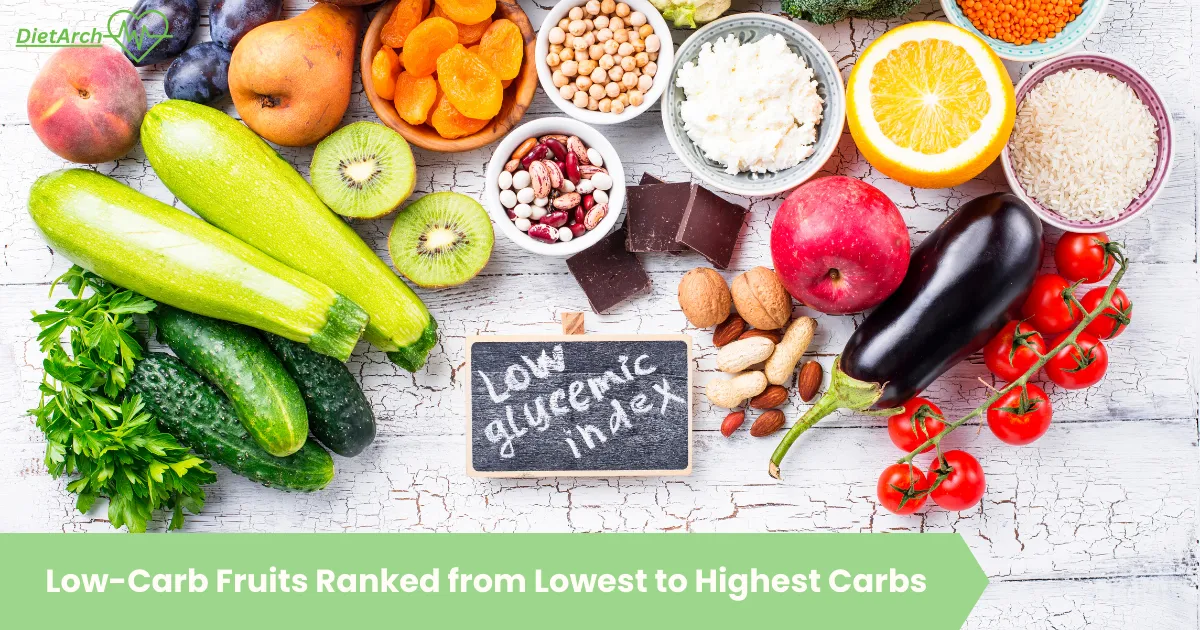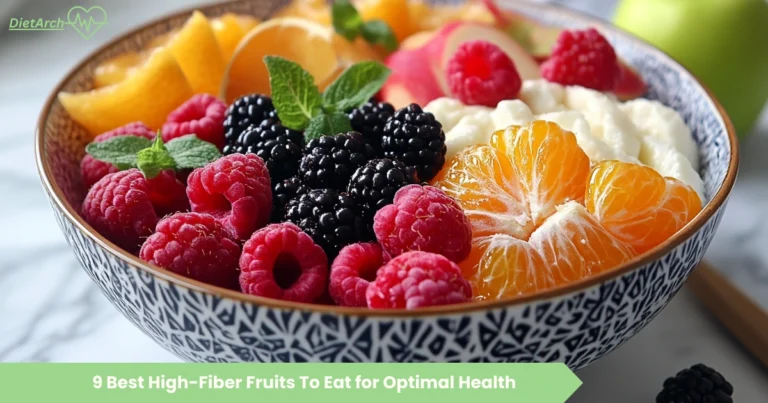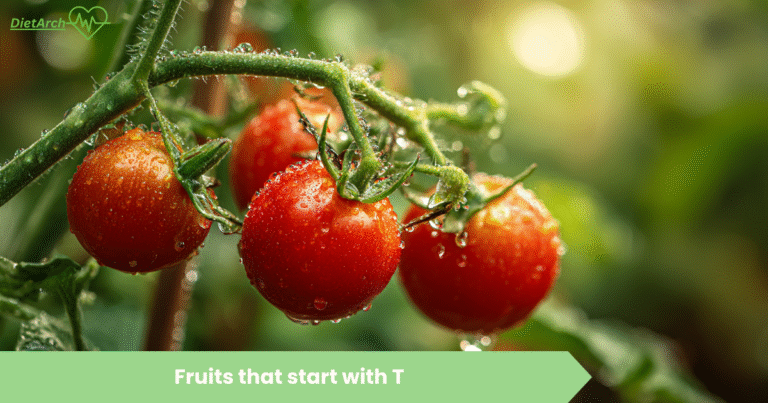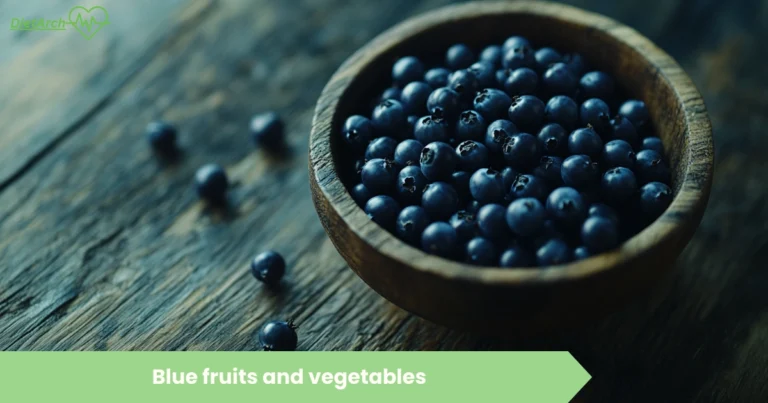Low-Carb Fruits Ranked from Lowest to Highest Carbs: A Comprehensive List of 10 Choices
Choosing fruits that are low in carbohydrates can be beneficial for those looking to manage their weight or blood sugar levels. This article ranks low-carb fruits from lowest to highest carbohydrate content, helping readers make informed choices. Understanding the carbohydrate content in fruits is essential for maintaining a balanced diet while enjoying a variety of flavors.
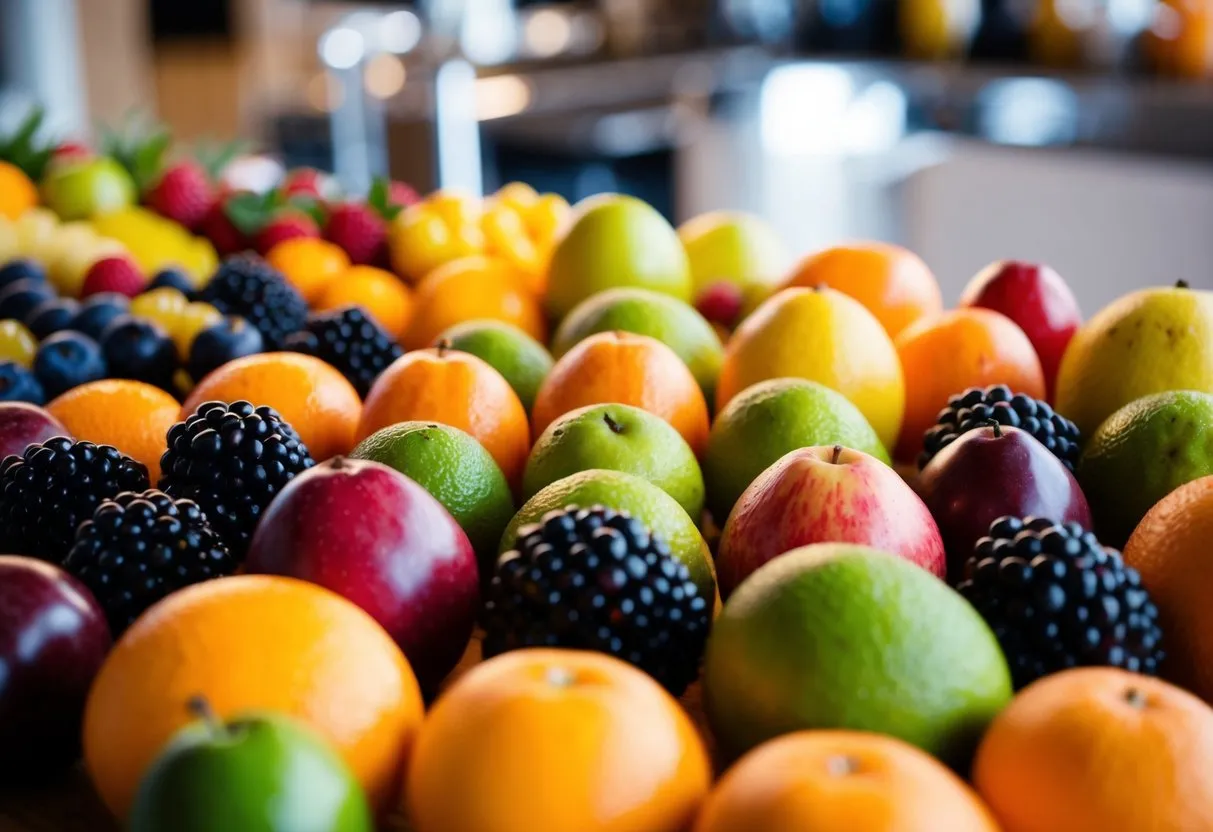
Low-carb fruits can be a refreshing and nutritious addition to meals or snacks. By knowing which fruits are lower in carbs, individuals can enjoy these healthy options without the worry of excessive carbohydrate intake.
1) Watermelon

Watermelon is a popular summer fruit known for its high water content. It is about 92% water, making it very hydrating.
This fruit has one of the lowest carbohydrate counts among fruits, with only 7.5 grams of carbs per 100 grams. It is also rich in vitamins and antioxidants, providing additional health benefits.
Watermelon can be a refreshing and low-calorie snack, making it a favorite choice for those following a low-carb diet.
2) Strawberries
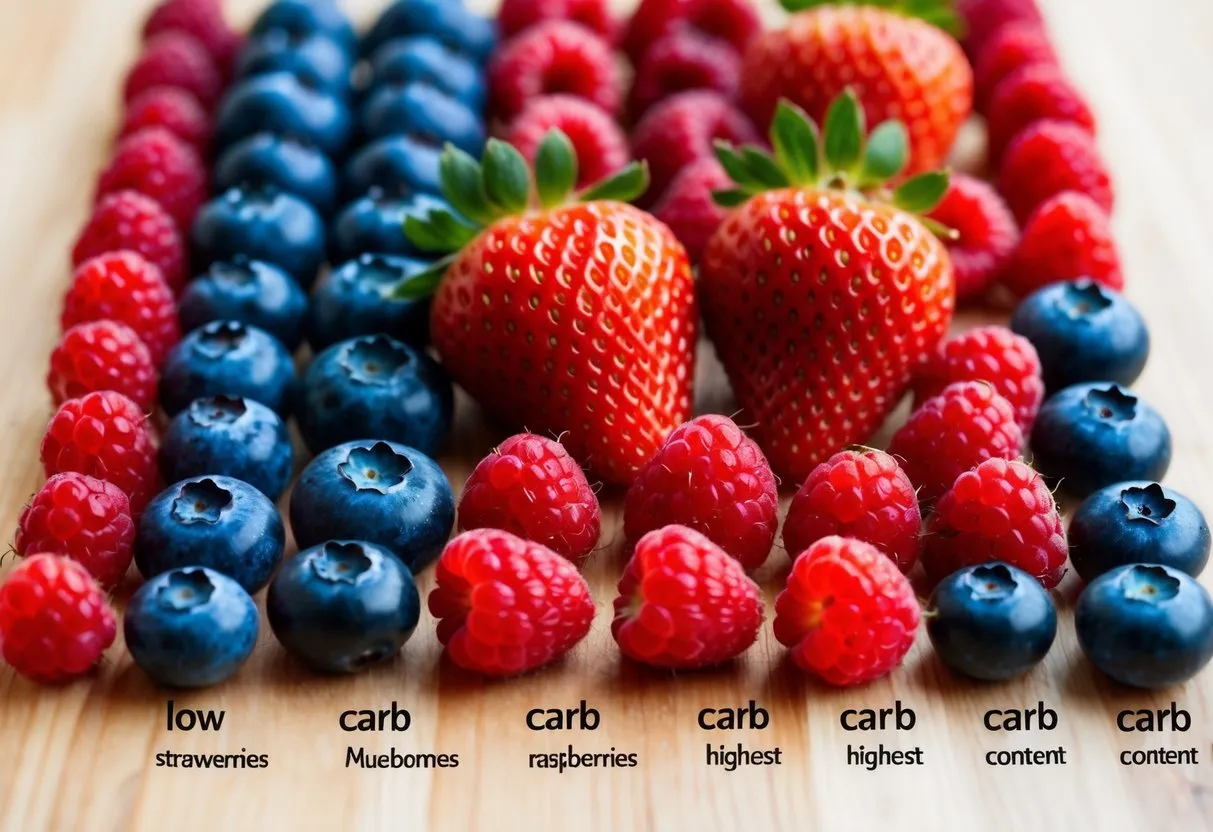
Strawberries are a popular low-carb fruit. They are not only low in carbohydrates but also high in nutrients. One cup of sliced strawberries contains about 7 grams of carbs.
This fruit is rich in vitamin C, providing more than 100% of the daily requirement. Their natural sweetness and bright color make them a favorite for various dishes. Raspberries are slightly lower in carbs, but strawberries offer great health benefits.
3) Cantaloupe
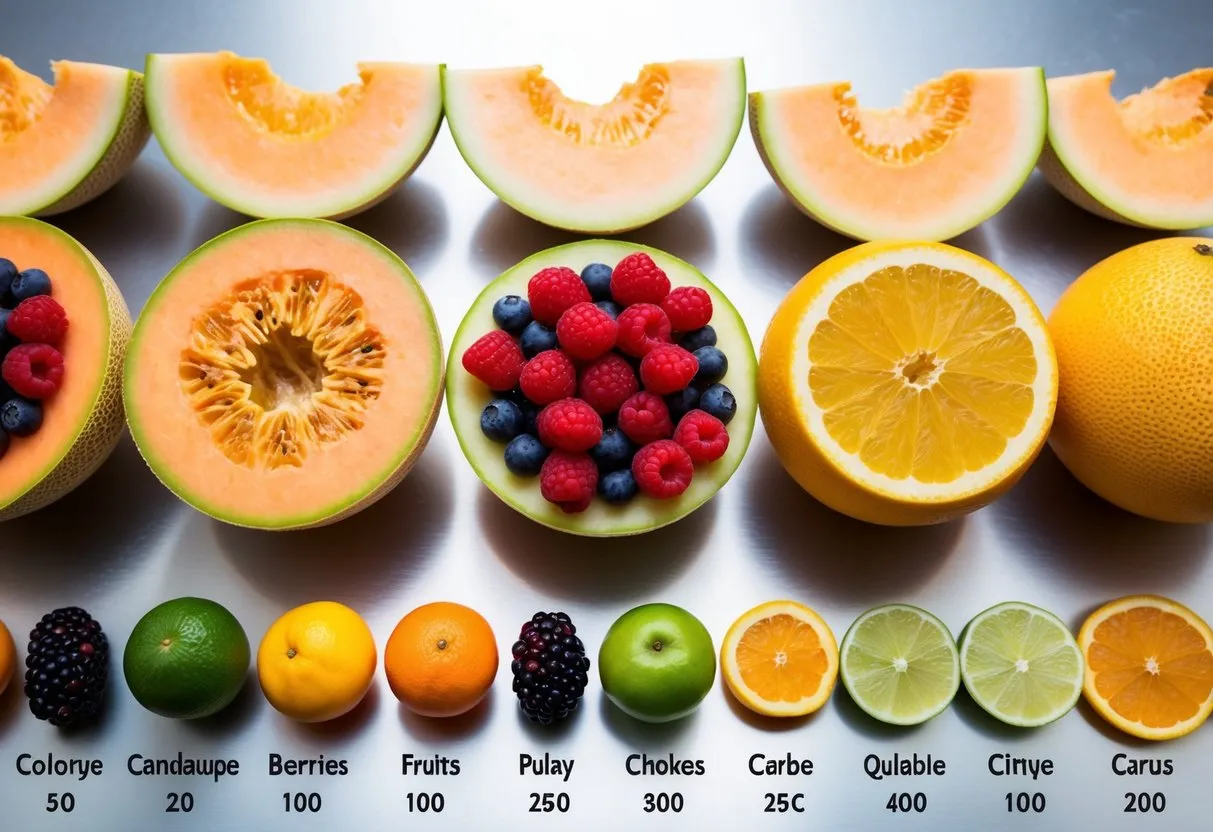
Cantaloupe is a popular low-carb fruit. In 100 grams, it has about 8 grams of carbs.
This is roughly equivalent to one cup or a large wedge of the fruit.
Cantaloupe is not only low in carbs, but it also provides hydration and essential vitamins. It can be a refreshing addition to salads or enjoyed on its own.
4) Peaches
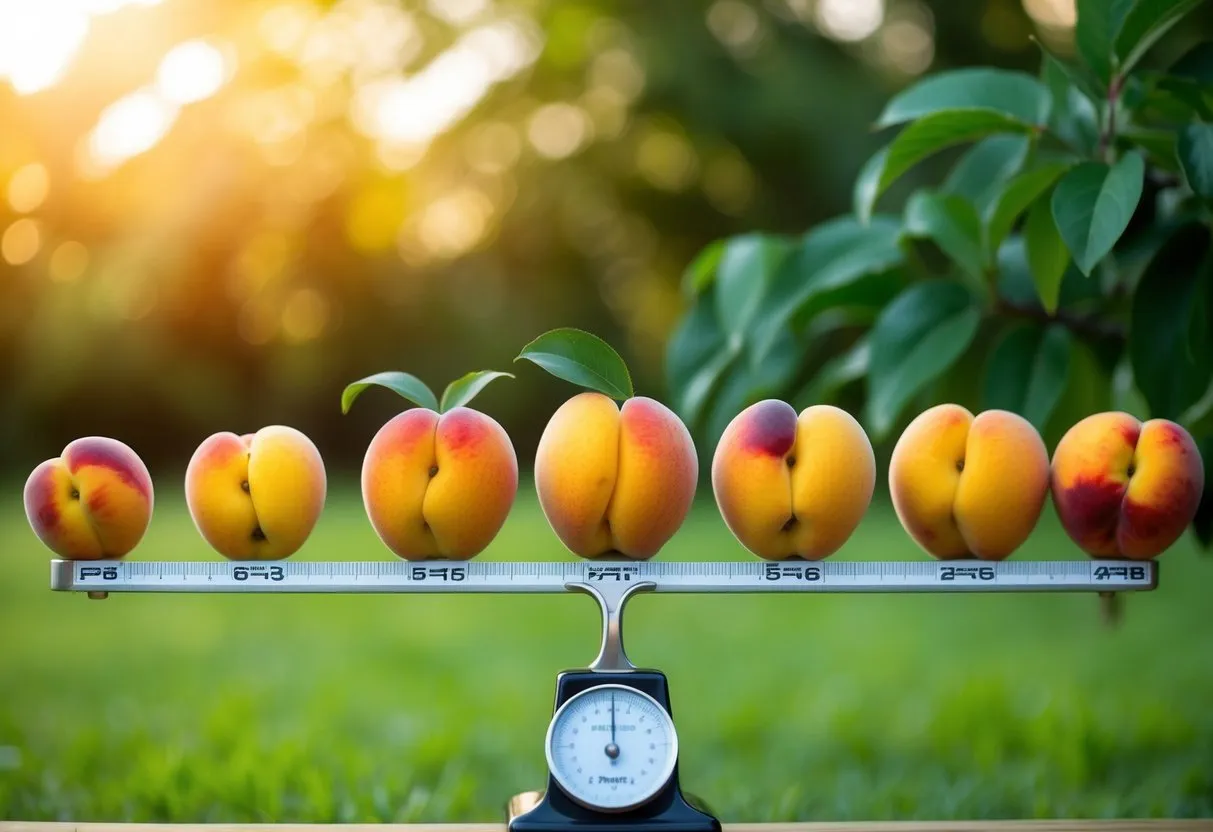
Peaches are a popular fruit known for their sweet and juicy flavor. They contain about 15 grams of carbohydrates in one medium peach.
When considering their nutritional value, peaches provide approximately 10.1 grams of carbs per 100 grams. They also offer fiber, which is beneficial for digestive health.
This fruit is not only tasty but is also a good choice for those looking to reduce their carbohydrate intake to loose visceral fat.
5) Raspberries

Raspberries are a popular low-carb fruit. They contain about 15 grams of carbohydrates per cup, including 8 grams of fiber.
This means their net carbs are relatively low, making them a good choice for low-carb diets and high-fiber fruit.
In addition to being low in carbs, raspberries are also rich in vitamins and antioxidants. They can be enjoyed fresh, frozen, or in various recipes.
6) Oranges
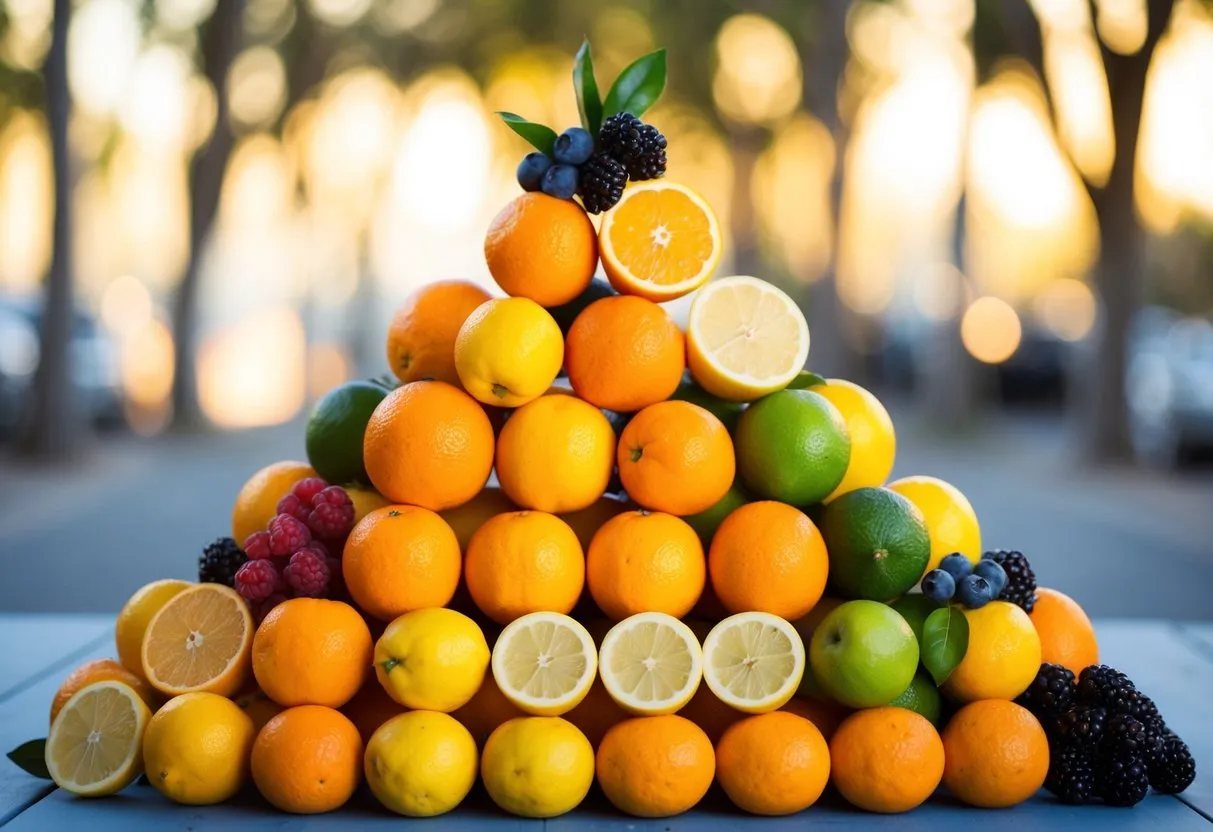
Oranges are a popular fruit known for their refreshing taste. They contain approximately 13.3 grams of carbs per 100 grams. This makes them a moderate option for those on a low-carb diet.
In addition to being low in carbs, oranges are a good source of vitamin C. They also provide fiber, which can aid digestion. Eating oranges in moderation can be part of a healthy diet.
7) Kiwi
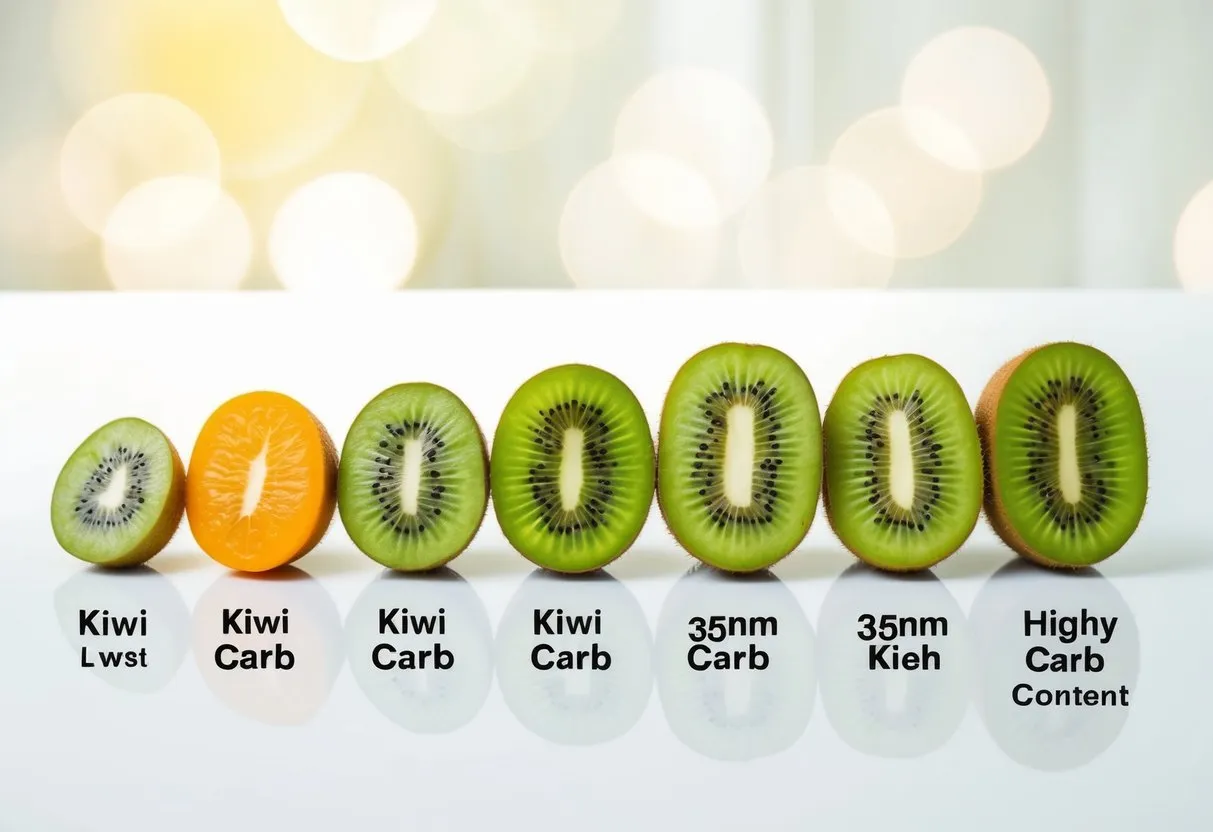
Kiwi is a low-carb fruit that can be enjoyed on various diets. Each kiwi contains about 10 grams of carbs, with around 6 grams of sugar.
This fruit is not only low in calories but also offers a good amount of vitamin C and fiber. Its sweet and tangy flavor makes it a popular choice for adding color and nutrition to meals.
8) Blackberries
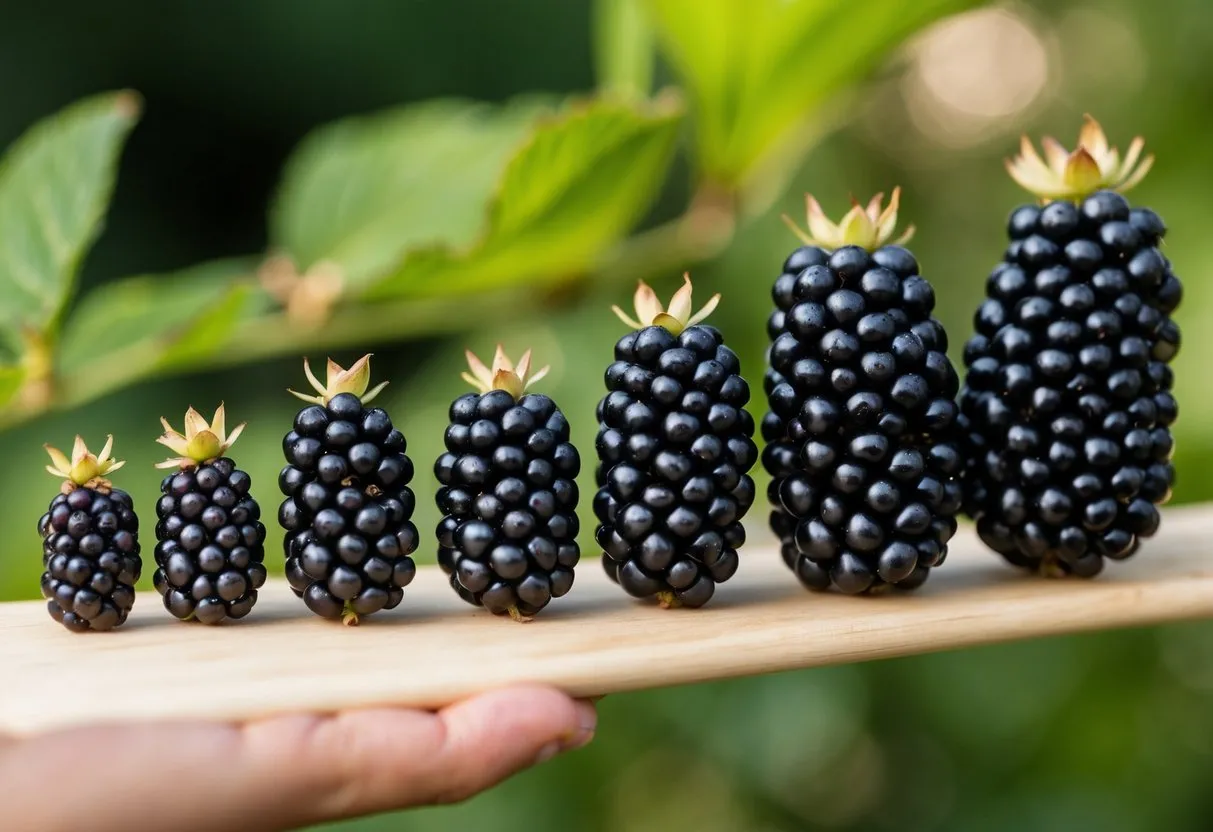
Blackberries are a popular low-carb fruit. They are known for their sweet and tart flavor.
A half-cup serving (about 70 grams) has approximately 4 grams of carbohydrates. This makes them a great choice for those watching their carb intake.
Blackberries are also high in vitamins, minerals, and antioxidants, making them a healthy option. They can be eaten fresh or added to smoothies and desserts.
9) Plums
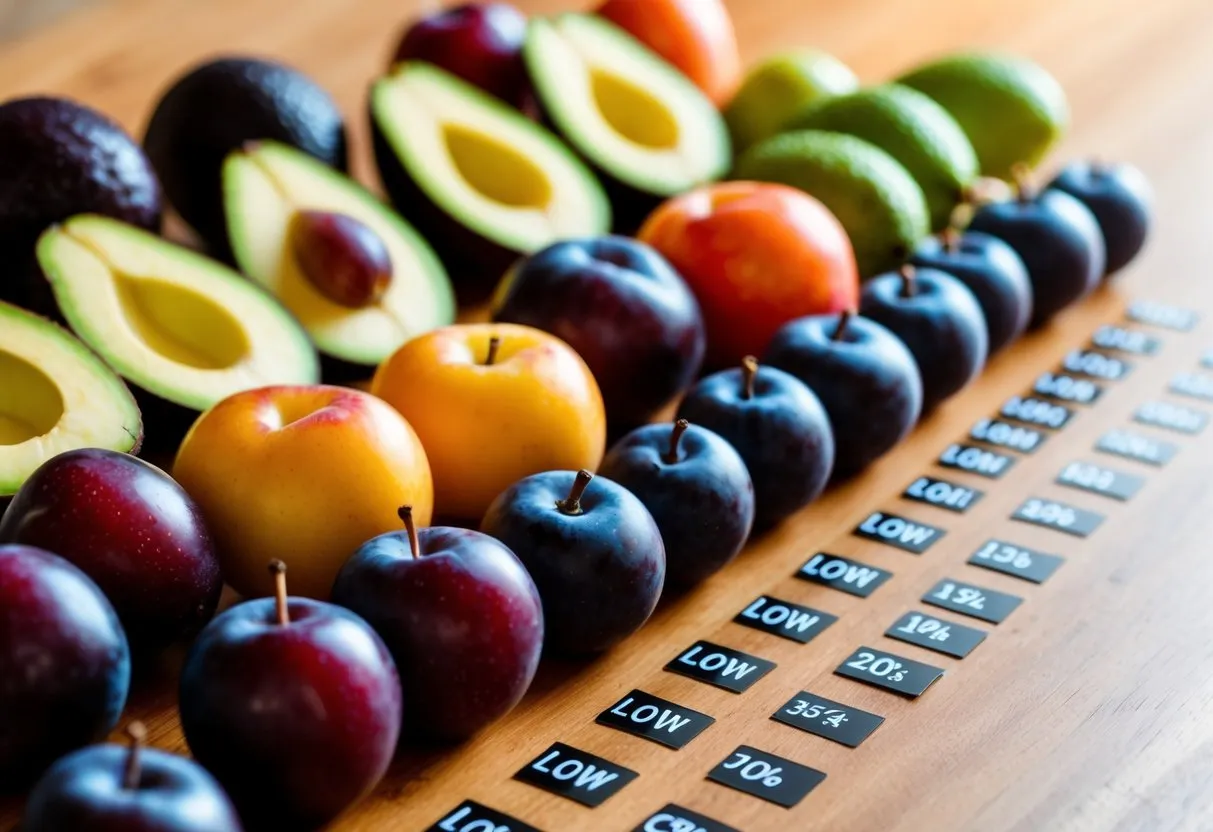
Plums are a tasty fruit that fits well into a low-carb diet. A medium plum has about 7.6 grams of carbohydrates.
They are not only low in carbs but also rich in vitamins and antioxidants.
Plums can be eaten fresh or added to salads and yogurt for flavor. Their natural sweetness makes them a favorite snack.
10) Starfruit
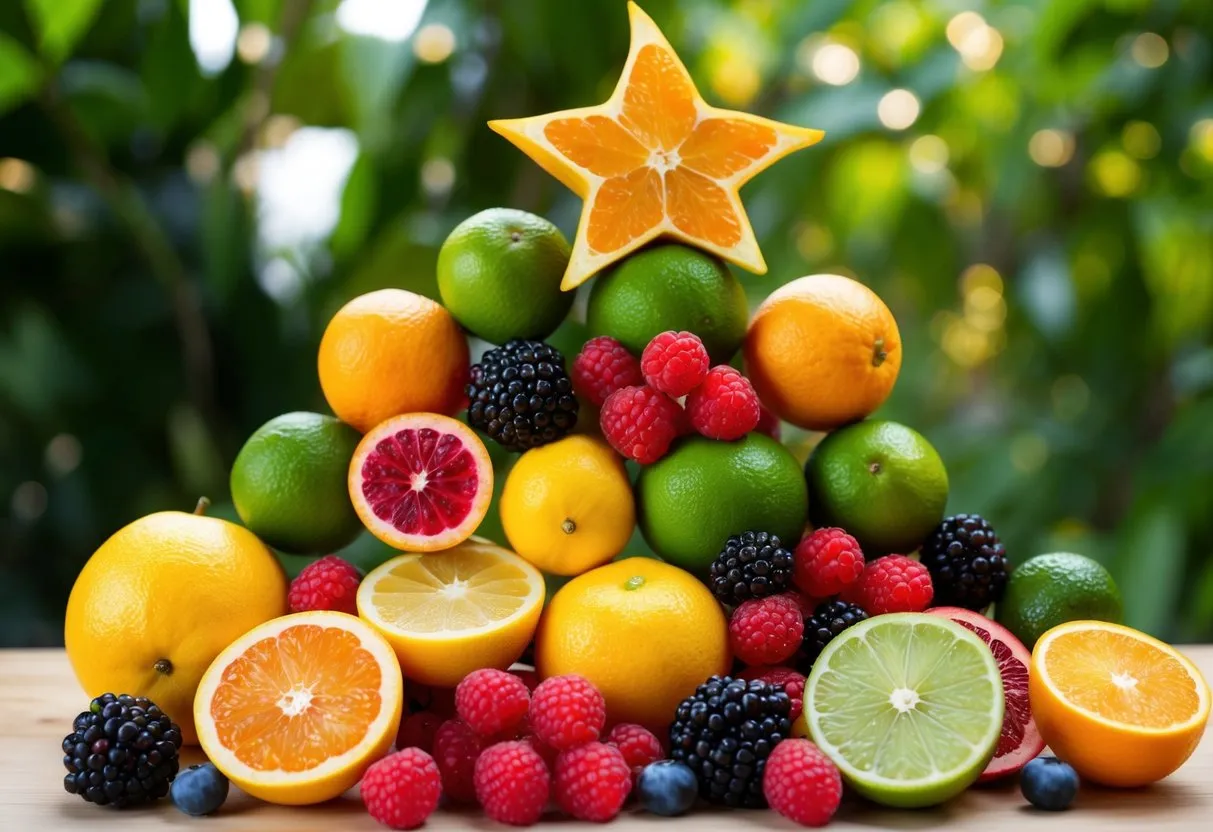
Starfruit, also known as carambola, is a unique fruit shaped like a star when sliced. It has a refreshing taste that combines sweet and sour flavors. It is one the 10 weirdest fruits.
In terms of carbohydrates, starfruit is relatively low. It contains about 6 grams of carbs per 100 grams. This makes it a suitable option for those looking to reduce their carb intake.
Net Carb comparison
Fruit | Total Carbs (g/100 g) | Fiber (g/100 g) | Net Carbs (g/100 g) |
|---|---|---|---|
Watermelon | 7.5 | 0.4 | 7.1 |
Strawberries | 7.7 | 2.0 | 5.7 |
Cantaloupe | 8.16 | 0.9 | 7.26 |
Peaches | 9.54 | 1.5 | 8.04 |
Raspberries | 11.94 | 6.5 | 5.44 |
Oranges | 15.5 | 4.5 | 11.0 |
Kiwi | 14.7 | 3.0 | 11.7 |
Blackberries | 9.61 | 5.3 | 4.31 |
Plums | 11.42 | 1.4 | 10.02 |
Starfruit | 6.0 | 2.0 | 4.0 |
Health Benefits of Low-Carb Fruits
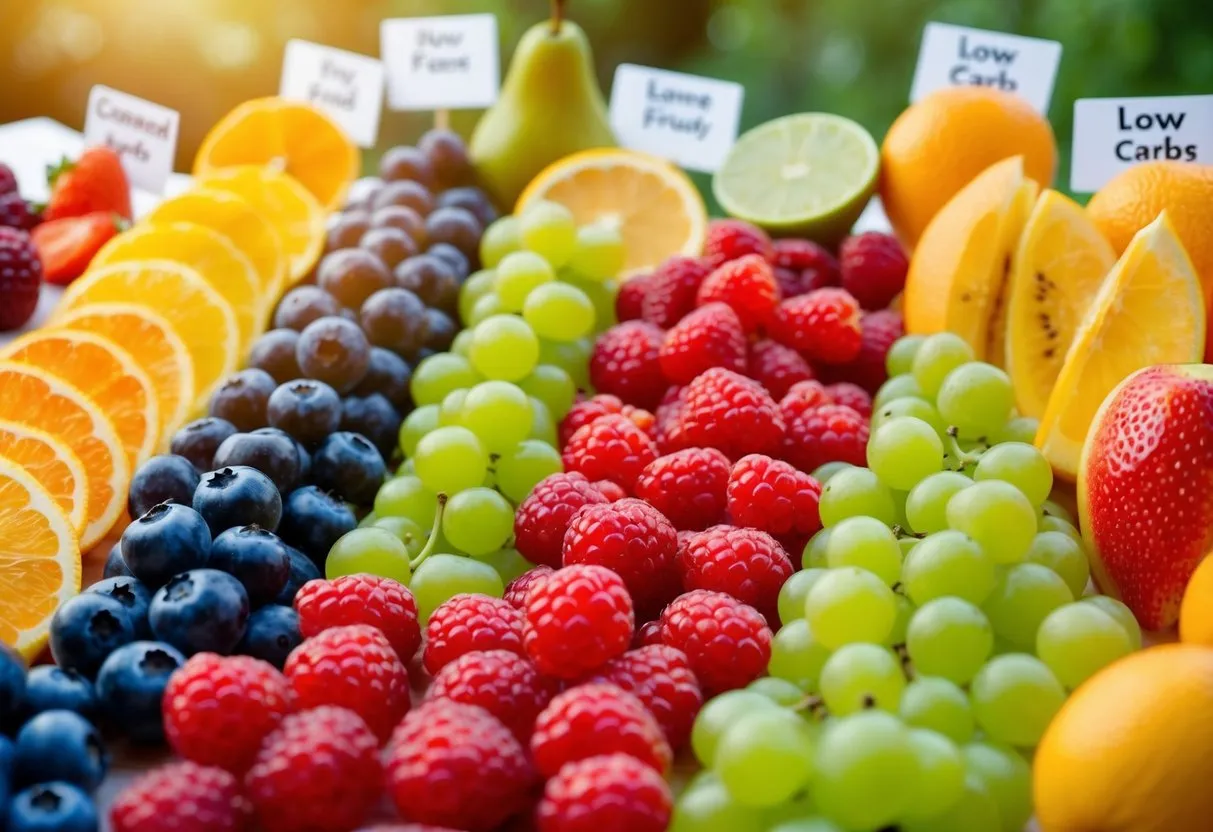
Low-carb fruits offer various health benefits that can support a balanced diet. They can aid in weight management, help control blood sugar levels, and provide essential nutrients. These advantages make them a smart choice for many.
Weight Management
Low-carb fruits are often lower in calories and sugars compared to their higher-carb counterparts. This makes them a great option for those looking to manage their weight.
For example, berries like strawberries and blackberries are high in fiber, which promotes fullness. They have fewer calories, allowing individuals to enjoy sweet flavors without overindulging.
Incorporating these fruits can satisfy cravings while maintaining a caloric deficit. Their sweetness can reduce the desire for sugary snacks, contributing to healthier eating habits.
According to nutritionists, combining low-carb fruits with proteins or healthy fats can enhance satiety even more. This can lead to better weight control without feeling deprived.
Blood Sugar Control
Low-carb fruits can help maintain stable blood sugar levels. They have a lower glycemic index, which means they cause a slower rise in blood sugar after eating.
Fruits such as strawberries, raspberries, and cantaloupe are particularly beneficial. They release sugars more gradually, helping to prevent spikes in insulin.
Fiber plays a crucial role here, as it promotes better blood sugar regulation. It slows down digestion and the absorption of carbohydrates, creating a more even energy release.
For those with diabetes or insulin sensitivity, adding low-carb fruits can be a safe choice. Regular consumption might improve overall metabolic health and reduce complications.
Nutrient Density
Low-carb fruits are packed with vital nutrients, making them a nutrient-dense food option. They provide numerous vitamins and minerals essential for good health.
For instance, fruits like blackberries are high in vitamin C and antioxidants. These nutrients are important for immune function and reducing oxidative stress in the body.
Many low-carb fruits also contain potassium, which supports heart health and muscle function. Choosing these fruits can contribute to a well-rounded diet without excess sugar and calories. Garlic cloves can also be used to improve heart health.
Incorporating a variety of low-carb fruits can ensure a broad intake of nutrients. This enhances overall nutrition and supports various bodily functions.
Tips for Incorporating Low-Carb Fruits into Your Diet

Low-carb fruits can be a delicious way to add nutrition to meals and snacks. Using specific strategies can help anyone include these fruits easily in their diet.
Meal Planning Strategies
Planning meals around low-carb fruits can simplify grocery shopping. Start by picking fruits like berries, melons, or avocados, which are lower in carbs.
When making a weekly menu, consider including fruit in breakfast. Adding berries to yogurt or oatmeal is one option. For lunch, a spinach salad with sliced strawberries can enhance flavor and nutrients.
Make a shopping list based on the planned meals. Include fruits that have a longer shelf life. This helps ensure they are available when needed without spoiling quickly.
Snack Ideas
Low-carb fruits make excellent snacks. They provide sweetness without many carbs. One option is to pair apple slices with almond butter for a satisfying crunch.
Another quick snack idea is berries with whipped cream. This combination feels indulgent but stays within low-carb limits.
For a refreshing treat, frozen grapes or berries serve as a cool snack during warmer months.
It’s also helpful to keep pre-portioned servings ready to grab. Using small containers can make it easy to maintain portion control, which can support diet goals.
Combining with Other Low-Carb Foods
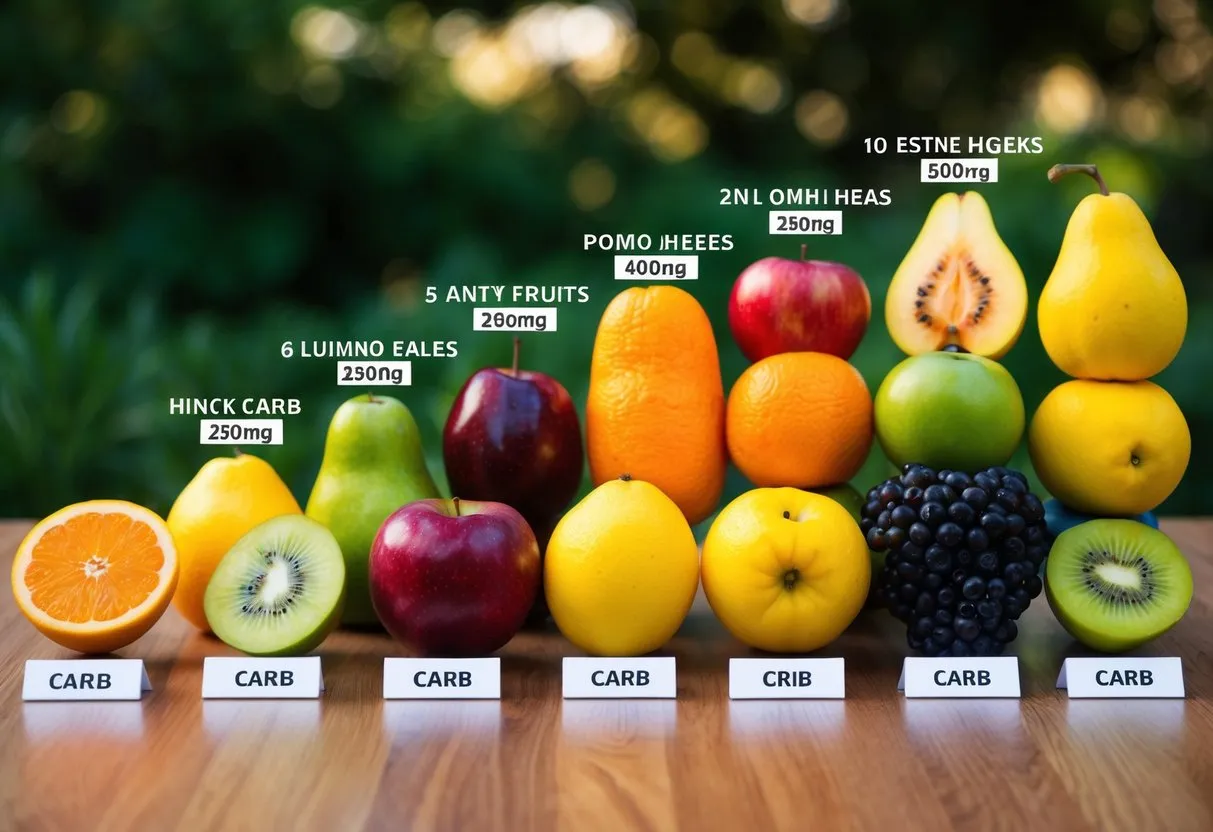
Combining low-carb fruits with other low-carb foods can enhance meals. For breakfast, try mixing avocado with eggs for a nutritious start to the day.
In salads, adding fruits like berries or diced apples brings a natural sweetness. Pairing these with leafy greens and nuts creates a balanced dish.
When preparing high fiber drinks or smoothies, low-carb fruits should be the base. Mix berries with spinach or kale for added fiber and nutrients. Adding a protein source like Greek yogurt can also make the smoothie more filling.
Experimenting with different combinations can lead to exciting new meals and snacks. Keep in mind the total carb count to stay within dietary goals.

